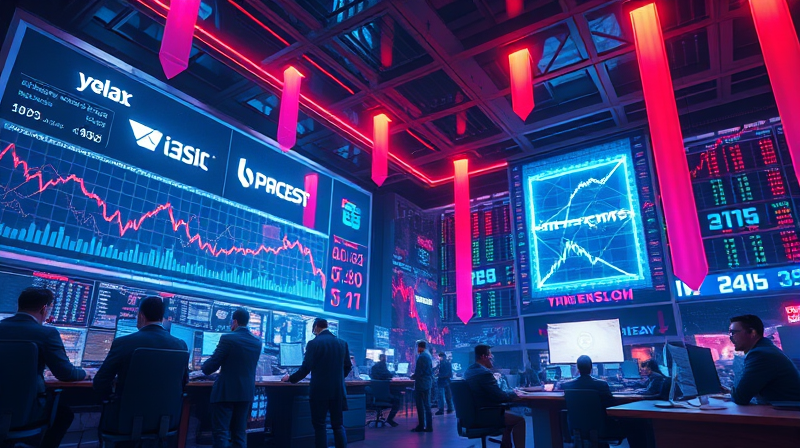
As the global economy evolves, investors are refocusing on industrials as a key beneficiary of cyclical shifts. The concept of sector rotation, which involves moving capital among sectors based on economic forecasts, is driving a fresh wave of interest in companies that produce machinery, build infrastructure, and support manufacturing. In 2025, this trend is underpinned by robust data and transformative themes that deserve a closer look.
Year-to-date, the Industrial Select Sector SPDR ETF (XLI) has outperformed major benchmarks with a gain of 5.2%, compared to the S&P 500’s 4.3%. This edge reflects the broader appetite for out-of-favor sectors entering an expansionary phase. After nearly matching the market in 2024, industrials have reasserted themselves as leaders by mid-2024, sparking momentum that continues to build in 2025.
unparalleled long-term growth potential for investors has emerged as a rallying cry among portfolio managers. With inflows favoring companies that marry value and resilience, the industrials sector is uniquely positioned to capitalize on recovery themes.
The drive to relocate supply chains back to North America is more than a slogan—it is a strategic imperative. In response to heightened geopolitical tensions and pandemic disruptions, firms are committing billions to reshoring manufacturing operations to the US. This migration not only bolsters national security but also creates a more resilient domestic production ecosystem that can absorb future shocks.
By bringing operations onshore, companies reduce transit times, minimize tariff risks, and gain closer oversight of critical processes. As evidence mounts, investors are rewarding those with clear plans to localize key stages of production, from component fabrication to final assembly.
Federal policy has become a powerful catalyst. Legislation like the Inflation Reduction Act, Infrastructure Investment and Jobs Act, and CHIPS Act have unlocked more than $430 billion in new industrial projects. These measures aim to modernize America’s manufacturing base and stimulate job creation, with over 234,000 positions expected by 2031.
massive infrastructure and clean energy spending has translated into record outlays for construction, with US manufacturing construction spending hitting $225 billion in January 2024—a 37% year-over-year increase and nearly triple the levels seen in mid-2020. This surge in capital deployment underscores the government’s commitment to reviving factories, upgrading facilities, and expanding logistical networks.
Industrial firms are not only building new capacity—they are reshaping through mergers and acquisitions. Activity in 2025 has accelerated across segments such as energy transition, automation, and digital enablement. CEOs are reviewing portfolios, spinning off non-core assets, and acquiring niche players to enhance technological capabilities.
These deals often target robotics specialists, renewable energy equipment manufacturers, and advanced materials developers. By integrating these capabilities, legacy industrial companies can broaden their offerings and secure a foothold in high-growth verticals.
For investors seeking direct exposure, certain names stand out for their valuation, growth prospects, and shareholder returns. Below is a snapshot of five leading stocks that exemplify the sector’s diversity and strength.
robust workforce expansion and hiring trends complement these stock-specific themes, as manufacturing employment surpasses pre-pandemic levels, approaching 13 million workers nationwide.
Investors employ several approaches to harness the industrials upswing within a sector rotation framework. Each strategy aligns with distinct objectives and risk tolerances:
While the outlook is favorable, industrials carry inherent cyclicality. Key risks include:
Looking ahead, the industrials sector will increasingly be defined by technology adoption. Investment in AI-driven automation, electric vehicle infrastructure, and renewable energy systems promises to drive the next wave of growth. Companies that pivot successfully towards smart factories, digital supply chains, and sustainable manufacturing will be best positioned to thrive.
unprecedented level of investor inflows into specialized industrial ETFs suggests strong conviction that these structural trends will endure. As the global economy transitions to a more interconnected and electrified future, industrial firms stand at the forefront of innovation.
In summary, the renewed interest in industrials is underpinned by solid performance metrics, transformative reshoring initiatives, supportive public policy, and dynamic M&A activity. By adopting a disciplined sector rotation strategy and carefully managing risks, investors can position themselves to benefit from one of the most compelling narratives of the 2025 market cycle.
Whether through broad ETF exposure or targeted stock selection, the industrials sector offers a unique blend of value, growth, and resilience that merits a central role in diversified portfolios.
References













